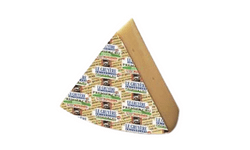Champagne is from the Champagne region of France, Parmigiano Reggiano cheese and Prosciutto di Parma ham from the Parma region of Italy, Toscano olive oil from Tuscany, Roquefort cheese and Champagne from the region of the same name in France. Then there is Irish Whiskey, Darjeeling tea, Florida oranges, Idaho potatoes, Vidalia onions, Washington State apples, and Napa Valley Wines. This is but a tiny example of products associated with “geographical indications” (GIs). GIs are used to identify products that come from a particular geographical region. They act as trademarks (also referred to as “certification marks”) inasmuch as selling products marked with false geographical indication may be deemed an infringement as well as triggering other legal liabilities. Geographical indications are protected by international treaty as well as trademark and unfair competition laws.
In the United States, GIs are protected under US trademark law. So, Idaho for potatoes and Washington for apples are protected names. Not only are the names protected but so are graphical logos associated with the names. The Florida sunshine tree logo is one example:
A geographical indication may be difficult to obtain. Take, for example, one of our favorite cheeses, Gruyere. Wikipedia describes Gruyere cheese as a
Swiss-type or Alpine cheese, and is sweet but slightly salty, with a flavor that varies widely with age. It is often described as creamy and nutty when young, becoming more assertive, earthy, and complex as it matures. When fully aged (five months to a year), it tends to have small cracks that impart a slightly grainy texture.
From the description, it appears to originate in the Swiss Alpine region of Gruyere. That’s what a group of Swiss and French cheesemakers from Gruyere also believe. You can imagine how they felt when their trademark application for GRUYERE was recently rejected by the USPTO. They argued that, like champagne, which only originates in the Champagne region of France, Gruyere cheese only originates from the Gruyere region of Switzerland, otherwise it’s just cheese.
The cheesemakers voiced their displeasure at the USPTO decision to the US District Court in Virginia hoping for a more favorable ruling. To no avail. The district judge noted that the cheesemakers had previously and unsuccessfully applied for a trademark in 2010. At that time, the USPTO rejected the application on grounds that in the United States, Gruyere was a generic term for a specific type of cheese. You will recall that generic terms do not qualify as trademarks. Consistent with the prior reasoning, the court held that, in the United States, a majority of people associate Gruyere as a style of cheese, not a cheese from a particular region. The US dairy export council in the Food and Drug Administration support that conclusion and were elated by the decision (why wouldn’t they).The district judge wrote:
decades of importation, production, and sale of cheese labeled GRUYERE produced outside the Gruyère region of Switzerland and France have eroded the meaning of that term and rendered it generic.
….
Although the term gruyère may once have been understood to indicate an area of cheese production, the factual record makes it abundantly clear that the term gruyère has now, over time, become generic to cheese purchasers in the United States.” Under U.S. law, trademarks cannot be given to generic terms.
The cheesemakers have already filed their notice of appeal. Coinciding with the cheesemakers’ attempt are similar efforts by other European exporters to gain geographical indications for Gorgonzola, asiago, and feta cheeses as well as bologna lunch meat. So, the cheesemakers’ case may have considerable impact on others’ attempt to obtain GIs in the United States. We will monitor this issue.
— Adam G. Garson, Esq.



